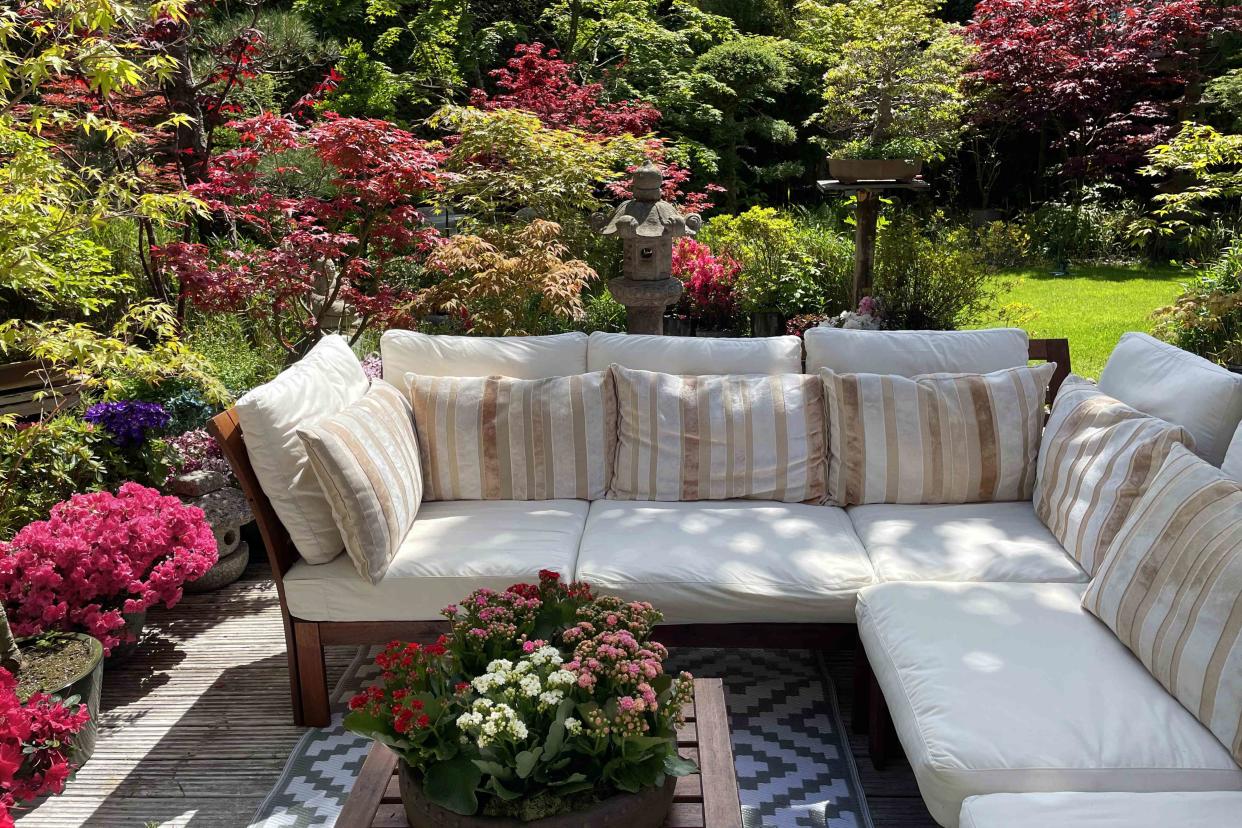These Are the Biggest Outdoor Furniture Mistakes
Don't end up with pieces that are going to fall apart a year later.

Mtreasure/Getty Images
Warmer temperatures are finally here, and, like us, you're probably looking forward to spending more time outside and in the sunshine. You may also be in the market for some new outdoor furniture to make it easier to relax in the backyard or enjoy a glass of wine on your porch. However, shopping for outdoor furniture requires a different approach than shopping for indoor furniture. Outdoor furniture not only needs to suit your style and exterior space, but it also needs to be able to stand up to the elements.
Balancing aesthetics and durability is the key to finding the right outdoor furniture, which isn't always easy. Returns are also rarely seamless, so you'll want to get it right the first time. So, here are the biggest outdoor furniture mistakes to avoid when shopping for the perfect pieces to complete your patio, deck, or yard.
Related: 23 Landscape Ideas to Upgrade Your Backyard and Improve Your Mood
Not Measuring Your Space
It doesn’t matter how large or small your outdoor space is—measuring is essential. “Without exact measurements, it’s easy to buy furniture that’s too small or too big," Karen Mooney, president at Ballard Designs says. "When you find an outdoor collection you really love, design a floorplan just like you would with an indoor room, using the actual dimensions to ensure a perfect fit and flow."
Ballard consultants can create 3-D renderings to see how something will look before you click “add to cart.” If you’re investing in multiple pieces, it’s a good idea to do this so you don’t get stuck with something that doesn’t fit the space or feels cramped. Other stores may offer similar visualization tools, so don’t forget to ask.
Choosing the Cheapest Option
Because outdoor furniture is exposed to the elements, it tends to get more wear and tear than indoor furniture. This is also why it can be a greater expense. “Good outdoor furniture is really a long-term investment," Mooney says. "If you buy simply on price, you’re likely to end up with pieces that don’t last, and need to be replaced in just a couple of seasons." So aim for the highest quality within your budget.
Not Considering the Material
Mooney tells me the most important thing to look for when buying outdoor furniture is the right material. “Look for pieces made with wood, metal, or synthetic weaves designed to stand up to sun and rain, so they stay looking good season after season," she says.
It’s hard to go wrong with teak wood. “For outdoor furniture, teak is the best wood choice for durability and long-lasting beauty," Mooney says. "It’s naturally strong, weather and insect-resistant.”
This material can be left treated or untreated depending on your aesthetic preference, Mooney explains. “If left untreated and exposed to weather, the natural teak finish will mellow to a warm, silvery gray over time, which is my preferred way to live with teak," she explains. "But plenty of people love to preserve the original color, and if that’s the case, you’ll need to seal it."
Forgetting the Importance of Good Upholstery
Quality upholstery is also a must-have. Mooney advises purchasing cushions made with durable, outdoor-safe fabrics that are easy to clean. If you’re unsure of what to look for—it’s hard to go wrong with Sunbrella brand fabrics, which are available in a variety of colors, styles, and prints.
Opting for Glass (Sometimes)
Glass is a great material for outdoor furniture because it’s very easy to clean and less expensive than wood. But isn't the right choice for those who live in windy or harsh climates. “If you decide glass is for you, be sure that it’s tempered,” says Mooney. “Also known as ‘safety glass,’ tempered glass is four times stronger than regular glass and is designed to shatter in smaller pieces, so it’s less likely to cause harm if it’s broken. Also, make sure your outdoor glass is thick and heavy enough to stay put in gusty winds.”
Still, if you live in an area with lots of wind or frequent storms—save yourself the stress and avoid glass altogether.
Not Covering or Storing Your Furniture Properly
If you live in a climate where it frequently snows in the winter, you’re probably not lounging on your outdoor furniture when the temps are below freezing. So, if you have a storage shed, garage, or basement, you may want to move your pieces there during the off-season.
Alternatively, Mooney recommends using covers to keep your furniture looking great for years to come. After all, your outdoor furniture is an investment, and you should protect it.
For more Real Simple news, make sure to sign up for our newsletter!
Read the original article on Real Simple.
